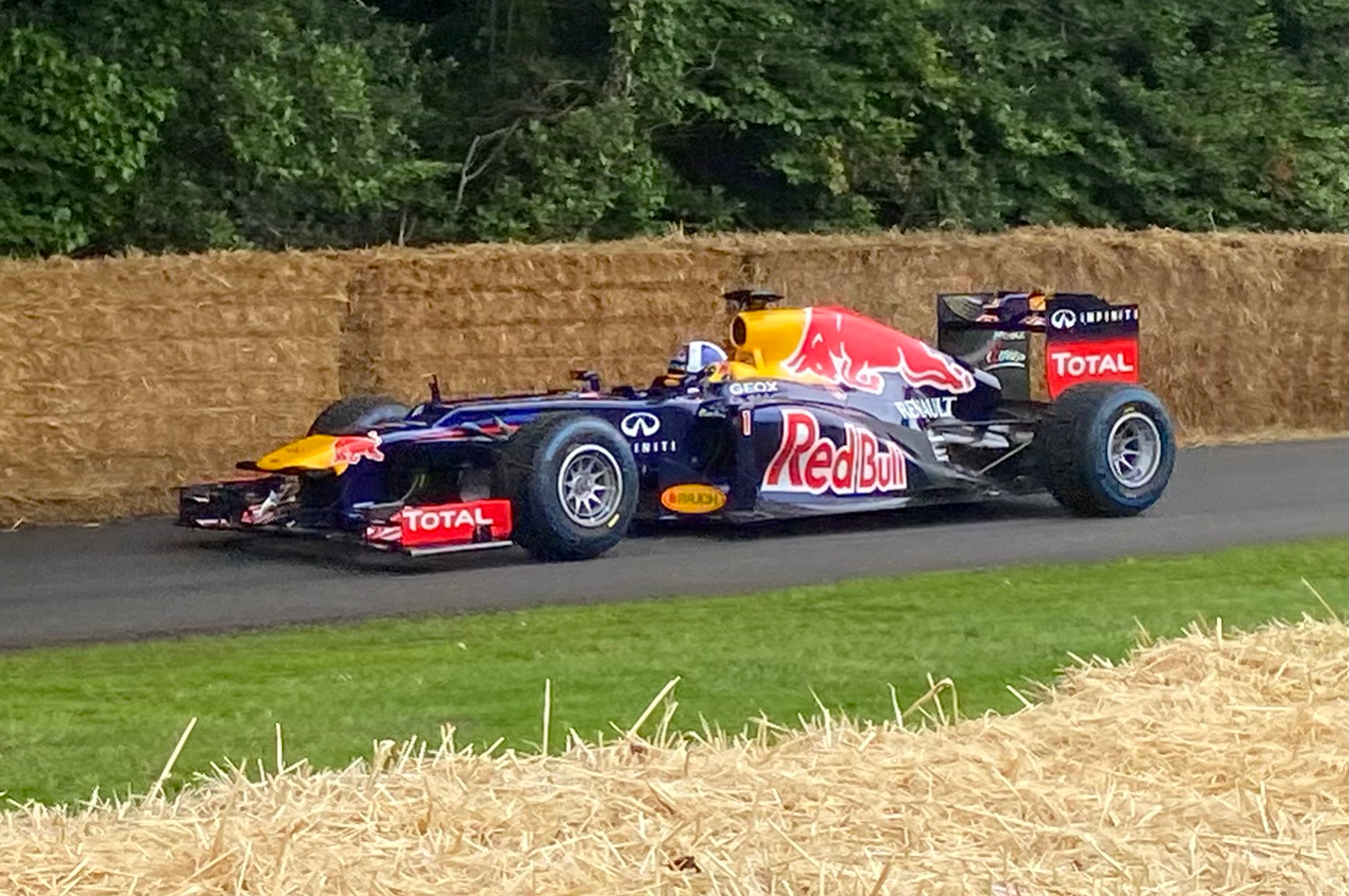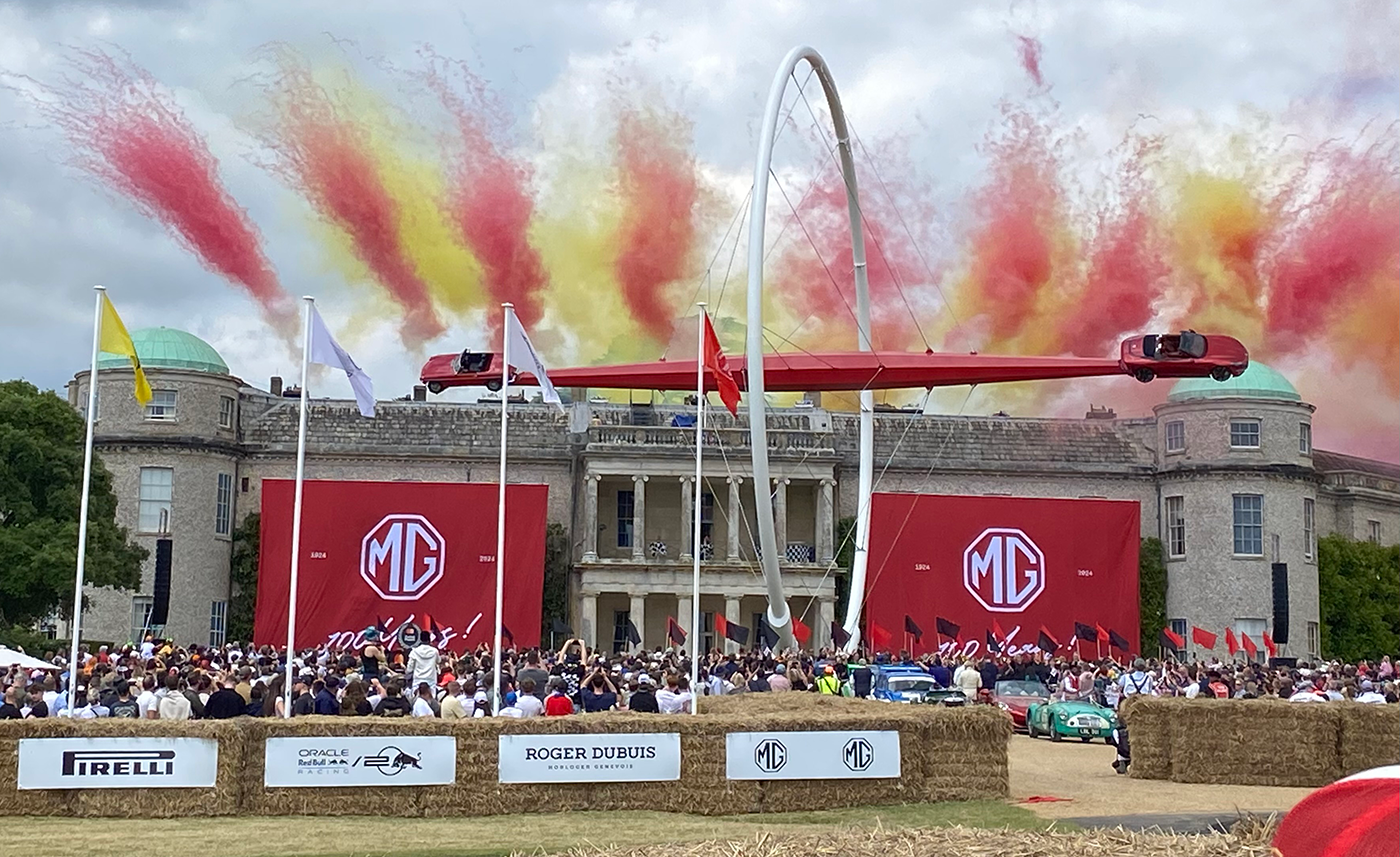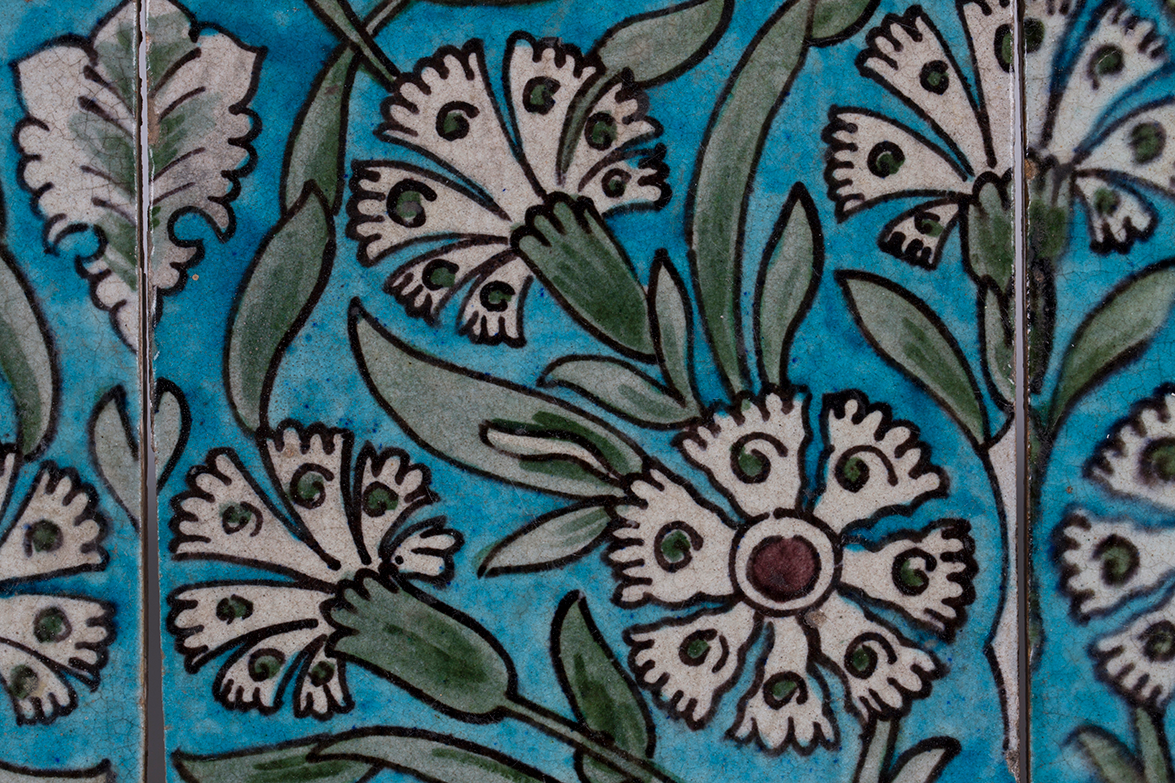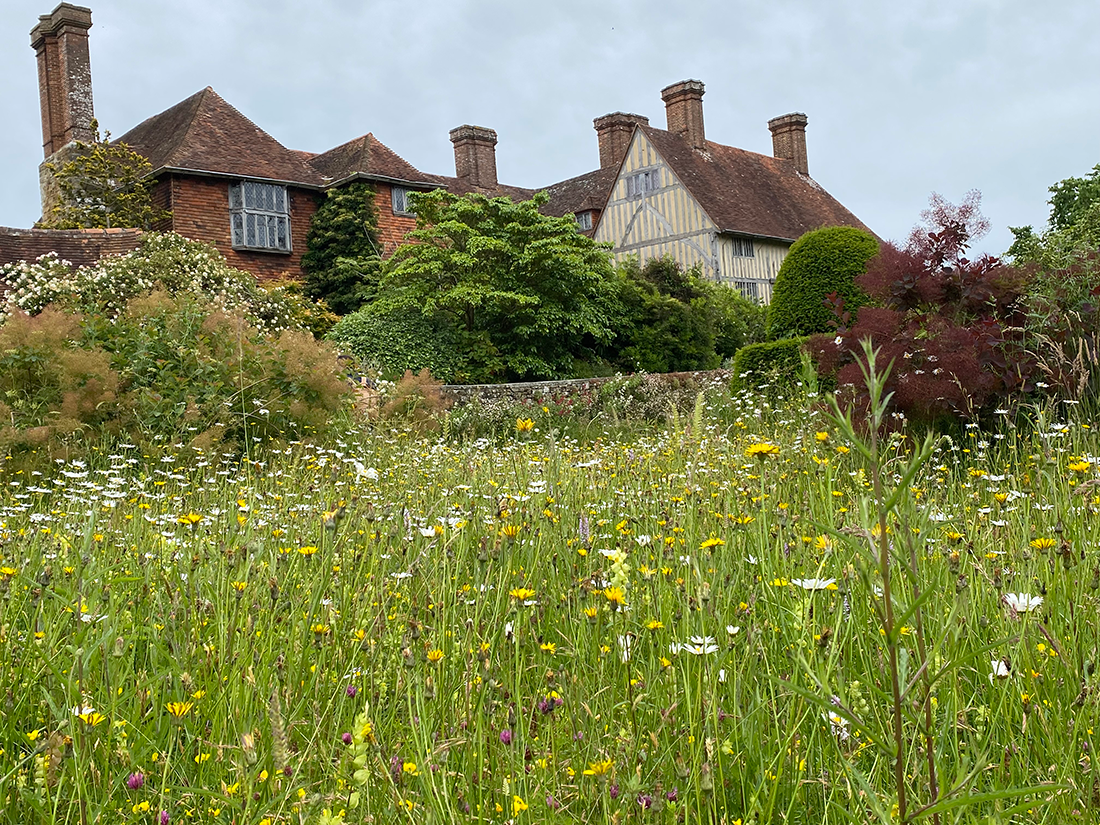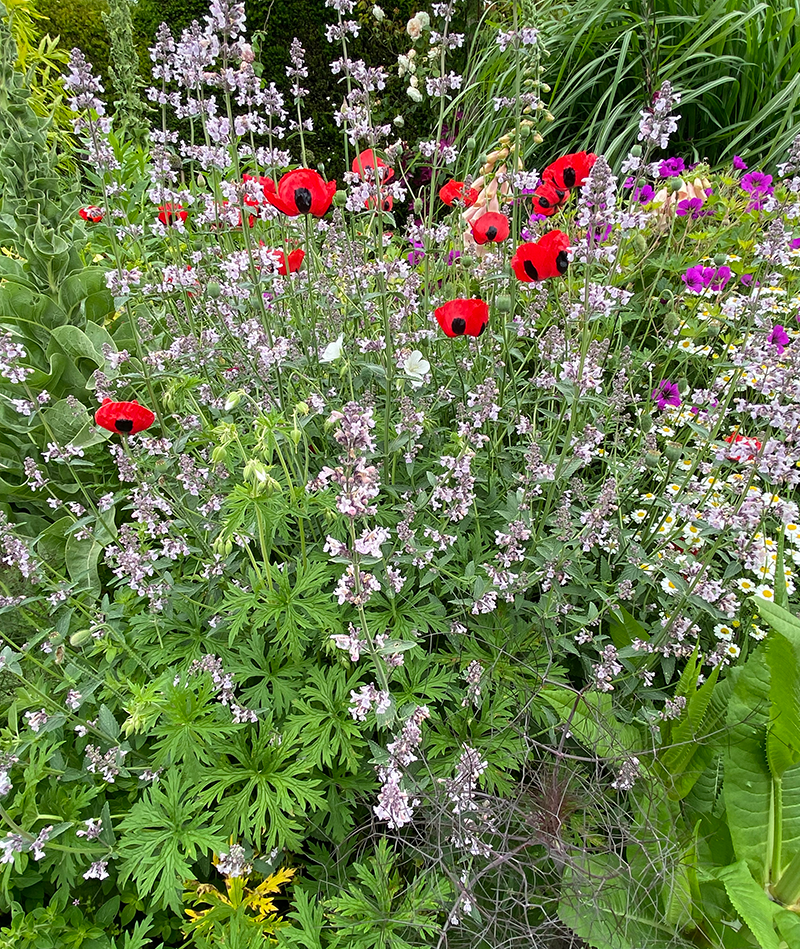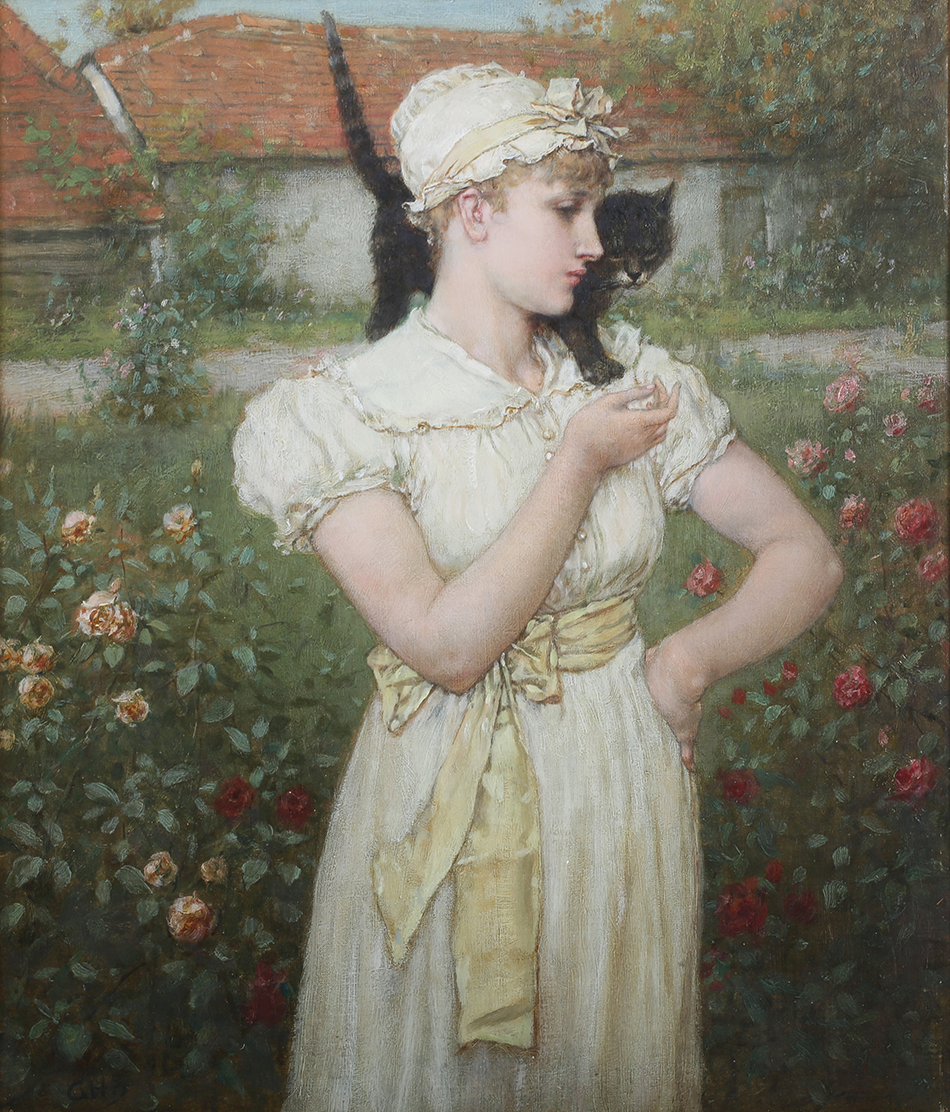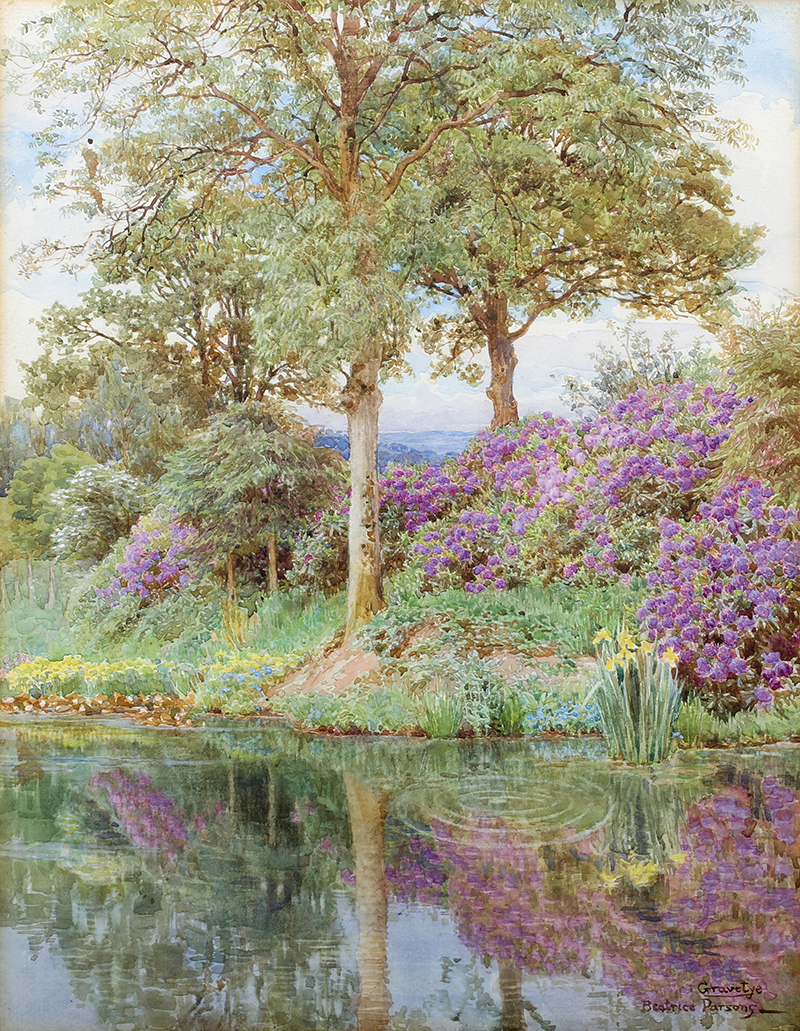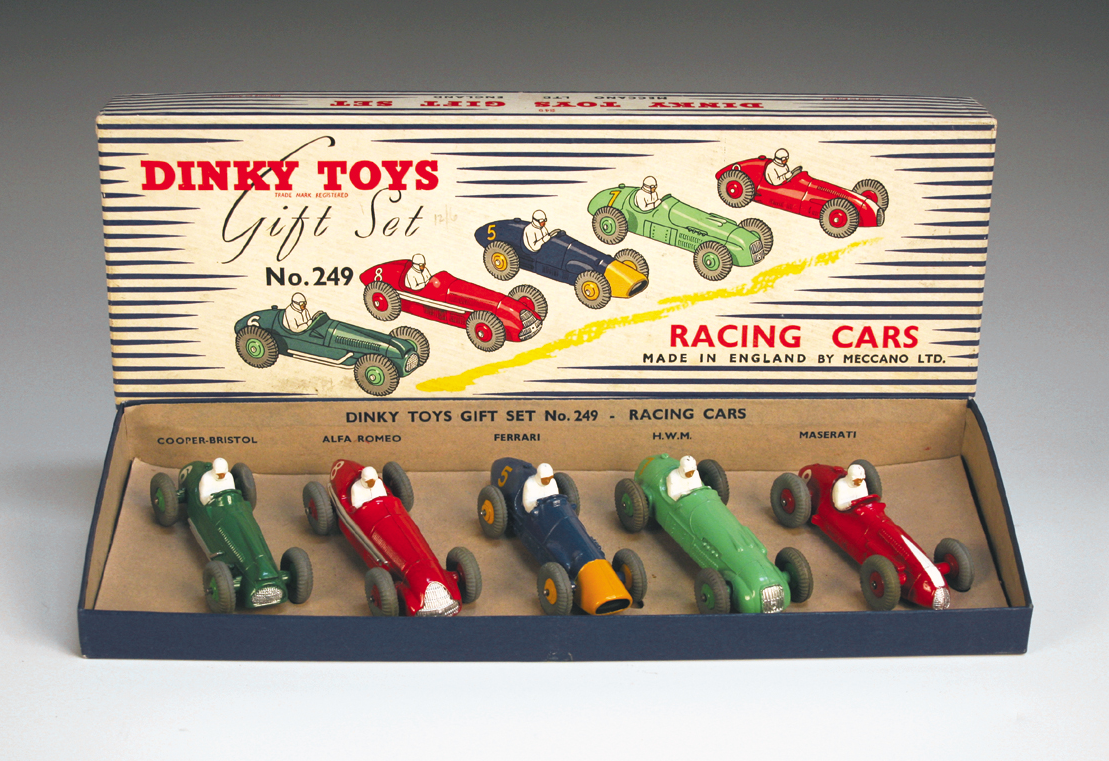
As the noise and drama of the Goodwood Festival of Speed fade to memory I am looking forward to the 2024 Goodwood Revival which celebrates racing cars which would have raced in period at the famous circuit.
The racing circuit started life as a perimeter track to the World War II RAF Westhampnett airbase. The Duke of Richmond and Gordon permitted the first race organised by the Junior Car Club which was held on the 18th September 1948.
There was a terrific appetite for motor racing after the war. Goodwood would become famous for its Glover Trophy Formula One non-championship race and the Goodwood nine hour sports car endurance races.
Just weeks after the introduction of driving tests in Great Britain, the No. 23a racing car became the first model vehicle to bear the brand Dinky Toys when it rolled off the production line in April 1934. However, the history of this household name of toy manufacturing already had its foundations firmly laid prior to the production of this little car. Meccano had been produced at the same Liverpool factory since the early 1900s, created by toy pioneer Frank Hornby.
The delightful AA set with its diorama box is a lovely example of this early period and sold at Toovey’s for £140 despite being a little play-worn.
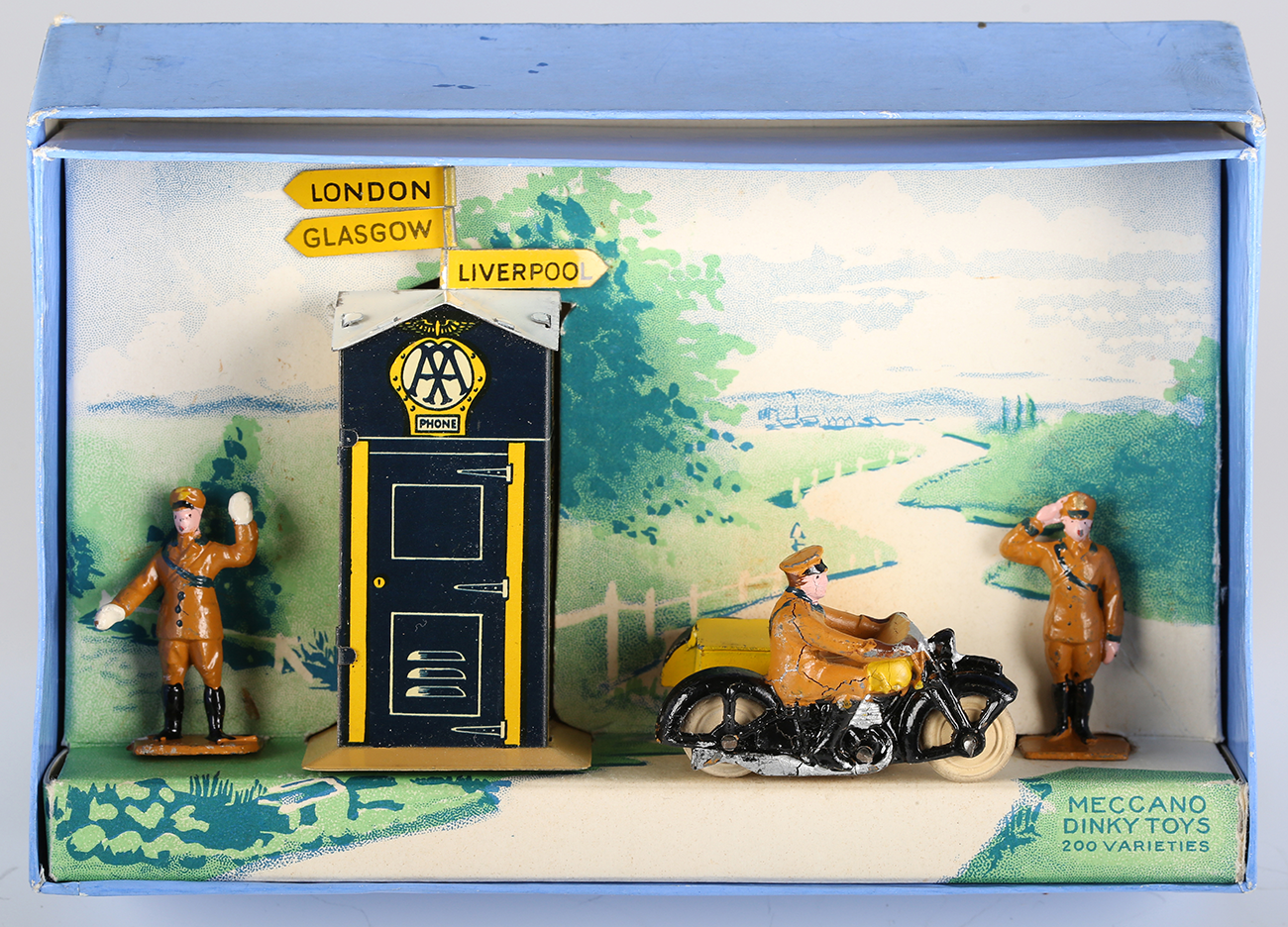
The Second World War halted production of toys at the ‘Binns Road’ factory in Liverpool with attention turning to war work. They even raised funds for a ‘Meccano’ Spitfire by creating a special pendant to purchase the aircraft.
Like Goodwood Dinky Toys enjoyed a renaissance after the war years. In 1947 Dinky ‘Supertoys’ were launched to great success. Dinky Supertoys were a larger scale than that previously offered and were produced for nearly two decades. The entire range of Dinky vehicles included planes, military vehicles, cars, vans and lorries. In their striking boxes and bold colours, these are as prized among collectors today as they were coveted by children of the day. The Dinky Toys No. 249 Gift Set Racing Cars, comprised cars which would have raced at Goodwood in period’. It made £950 at Toovey’s. Dinky Toys remain popular with collectors of toys and historic motor racing enthusiasts and Toovey’s toy specialist, Chris Gale is inviting entries for the next specialist toy sale.
